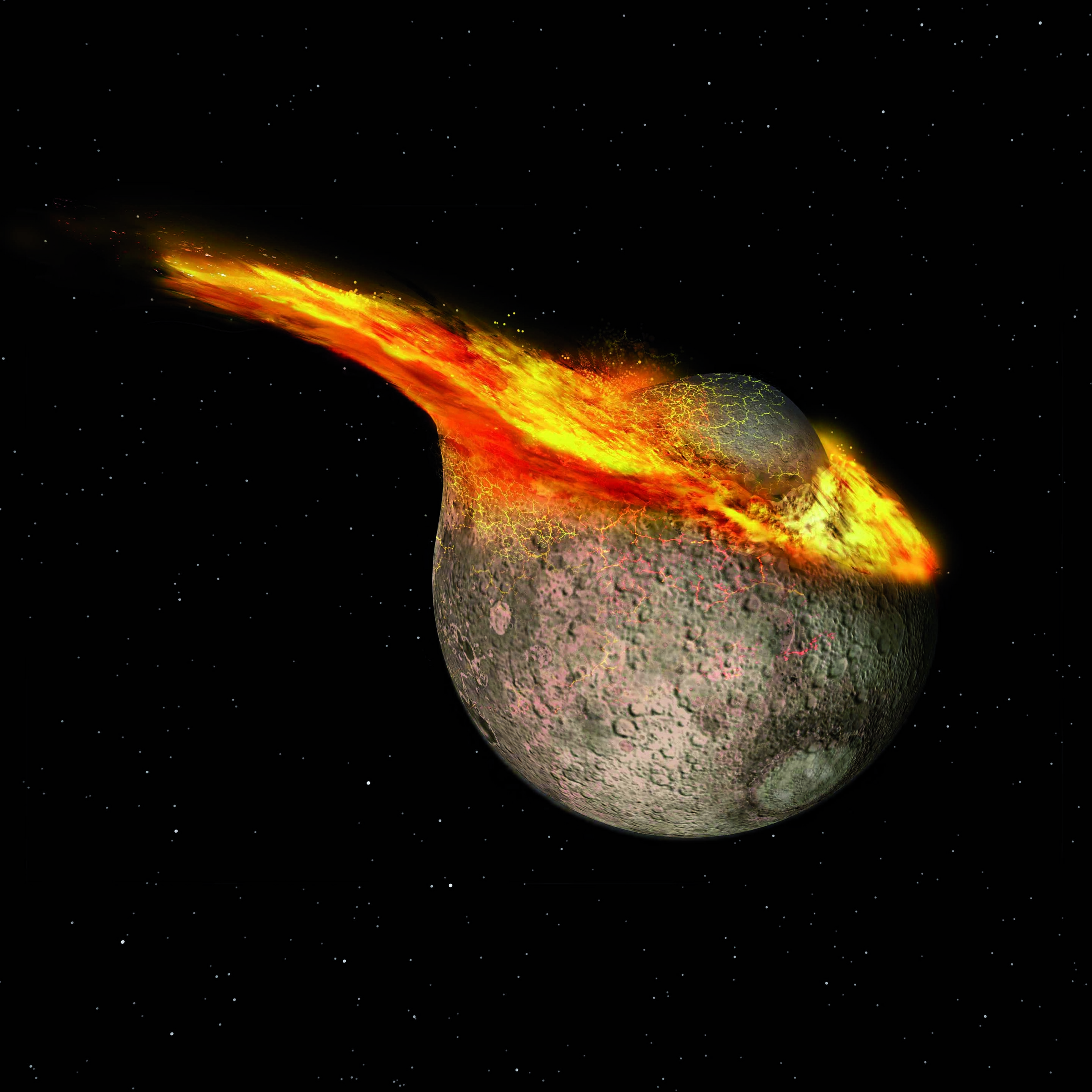FYI. Here is some more reporting on this model for dating the when the Earth and Moon formed and how long the lunar magma ocean lasted.
The moon formed a little later than previously assumed. When a Mars-sized protoplanet was destroyed in a collision with the young Earth, a new body was created from the debris ejected during this collision, which became the moon. Planetary geophysicists at the German Aerospace Center (Deutsches...

phys.org
My note. The reference paper has many details on how this new lunar age was calculated. ‘A long-lived magma ocean on a young Moon’,
https://advances.sciencemag.org/content/6/28/eaba8949, “Abstract. A giant impact onto Earth led to the formation of the Moon, resulted in a lunar magma ocean (LMO), and initiated the last event of core segregation on Earth. However, the timing and temporal link of these events remain uncertain. Here, we demonstrate that the low thermal conductivity of the lunar crust combined with heat extraction by partial melting of deep cumulates undergoing convection results in an LMO solidification time scale of 150 to 200 million years. Combining this result with a crystallization model of the LMO and with the ages and isotopic compositions of lunar samples indicates that the Moon formed 4.425 ± 0.025 billion years ago. This age is in remarkable agreement with the U-Pb age of Earth, demonstrating that the U-Pb age dates the final segregation of Earth’s core.”
My note. The advances.sciencemag.org report does show it is difficult to reconcile various radiometric ages obtained from lunar samples with this new magma ocean model and age for the origin of the Moon and when Theia hit the proto-earth in the giant impact model. This is refreshing to read.
“Comparison to chronology of lunar samples. The LMO solidification time scale of up to ~200 Ma inferred from our model seems inconsistent with the chronology of LMO products. Crystallization ages for ferroan anorthosites (FANs), representing the LMO’s flotation crust, range from ~100 to ~200 Ma after the beginning of the solar system…The Lu-Hf isotopic evolution of urKREEP has also been investigated using lunar zircons separated from KREEP-rich highland breccias (23). However, the zircon and bulk rock data cannot simultaneously be fitted in a single model, because they do not plot along a common isotopic evolution line for urKREEP. Also, the zircon data can only be fitted to the LMO’s Hf isotopic evolution for an unrealistically old onset time of LMO crystallization of 4.567 Ga (i.e., the age of the solar system). As such, and unlike for the bulk rock data, the zircon data are difficult to reconcile with a realistic model for the LMO’s thermal and isotopic evolution. One problem with the lunar zircon data may be that their Hf isotopic compositions require large downward corrections of ε176Hf for the effects of cosmic ray exposure (23). These corrections are inherently uncertain, and so, the lunar zircons may not accurately record the isotopic evolution of the LMO (see Materials and Methods). Age of the Moon. Our model not only provides the formation time of urKREEP but also predicts the time at which the LMO started to crystallize, which closely approximates the Moon’s formation time (that we treat as a free parameter). In the model above, the age of the Moon is 4.44 to 4.36 Ga (Fig. 4C, red histogram, and table S5). This age can be further refined by also including the well-dated lunar meteorite Kalahari 009, which has a precise age of 4.369 ± 0.007 Ga (24) and an elevated initial ε176Hf, indicating that it derived from a high-Lu/Hf source region (25).”
My note. Zircons are used to date the Earth’s oldest rocks now, Jack Hills at 4.375 billion years old so this new model for the magma ocean of the Moon and Theia time of impact and origin of the Moon dated to 4.44 billion years ago, has difficulty with lunar zircons that suggest the Moon formed near the same time as the solar system, 4.567 billion years ago. This is consistent with other lunar samples from Apollo dated too, some >= 4.5 billion years (see the NASA ADS Abstract service).
Perhaps the final chapter on Theia impact with the proto-earth to create our Moon, remains to be written





